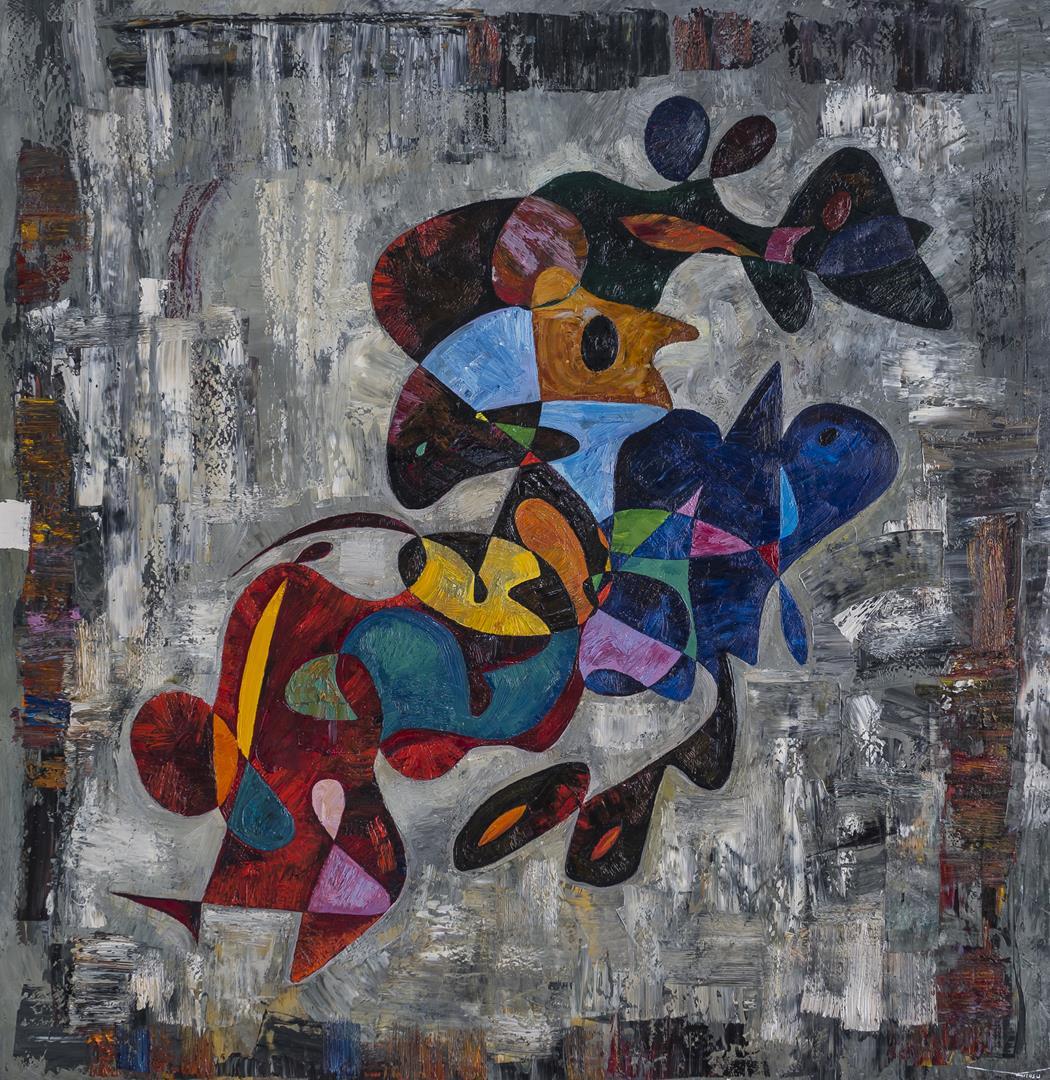

-
Year 2017
-
136x131 Cm / 53x51 In
-
Oil / Acrylic Base / Linen Canvas
-
Original Edition

Theotokos (2017)
-
Year 2017
-
136x131 Cm / 53x51 In
-
Oil / Acrylic Base / Linen Canvas
-
Original Edition
-
Sold
Theotokos (2017) oil painting Description
Theotokos by Gheorghe Virtosu represents nothing less than the inescapable and incontrovertible apex of the artist’s mature output. Art is considered to be a subjective field, in which one composes and views artwork in unique ways that reflect one's expertise, knowledge, preference, and emotions. The aesthetic experience encompasses the relationship between the viewer and the art object. In terms of the artist, there is an emotional attachment that drives the focus of the artwork. An artist must be completely in-tune with the art object in order to enrich its own creation. As the piece of artwork progresses throughout the creative process, so does the artist. Both grow and change to acquire new significance. If the artist is too emotionally attached or lacking psychological compatibility with a work of art, then this will negatively impact the finished product. According to Bosanquet (1892), the"aesthetic attitude" is important in seeing art as it allows one to consider an object with prepared interest to see what it suggests. However, art does not evoke an aesthetic encounter unless the viewer is willing and open to it. However compelling the thing is, it is up to the beholder to allow the existence of such an experience.
Theotokos depicts motion and harmony in an abstract figure. Firstly, Virtosu uses curvy lines to portray fluidity. The curved lines are often used to convey impressions of motion. The figure has several smooth curves at the edges and inner parts, which strongly suggests the presence of life. Secondly, it appears like it is moving towards the upper side of the painting, which creates a sense of unity in the painting. At the bottom left corner, the figure has what seems like a fish tail, which makes the viewer conclude that it is the rear end. Therefore, the figure is moving towards a particular direction. Moreover, the background white color has evident brushwork moving in one direction, horizontally, which bolsters the unity in the visual motion. Overall, the depiction of harmony and motion implies life, which points to the underlying inspiration and meaning Virtosu intended to portray.
To understand the painter’s inspiration and the purpose of the painting, the viewer should first grasp the key concepts in the artwork. The term ‘Theotokos’ reveals Virtosu’s motivation; it is a Greek word used to refer to Mary, the mother of Jesus. It literary translates to the bearer of God, and, in this case it implies Jesus. In the art, the central figure is enclosed in a frame-like surrounding on the edges of the piece. The enclosure depicts Mary’s womb that bore Jesus. Also, the motion indicates that there is life in Mary’s womb. Moreover, Theotokos has a white background, a color that represents goodness and purity. Thus, the figure connotes a pure soul, which is Jesus, in his mother’s womb. Therefore, the piece has a strong religious link.
-
Art Advisory Services



read more